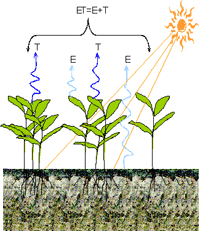Agricultural Research Division of IANR

West Central Research and Extension Center, North Platte
Date of this Version
12-2015
Citation
Published in Annals of the Entomological Society of America 108:1 (2015), pp. 26–34; doi: 10.1093/aesa/sau009
Abstract
The management of the soybean aphid Aphis glycines Matsumara is a major challenge to soybean production in the north-central United States. The identification and characterization of the insect predator community has informed integrated pest management strategies by providing insight on predators that can suppress soybean aphid populations. Hoverflies (Diptera: Syrphidae) are known predators of A. glycines, but more information is needed on their diversity, abundance, and performance to evaluate their importance as biological control agents of A. glycines. In this study, syrphid abundance was evaluated across two growing seasons in four soybean fields in east-central Minnesota. Six methods were used to quantify syrphid abundance at the larval, pupal, and adult life stages; describe species composition and richness for adults; and directly compare larval abundance to aphid abundance. The syrphid community comprised eight species, dominated by Toxomerus marginatus (Say) and Toxomerus geminatus (Say). Syrphid abundance was relatively low in soybean fields. Feeding trials were conducted to compare the performance of the most common syrphid (T. marginatus) on a diet of A. glycines with two native aphids, Aphis nerii Boyer de Fonscolombe and Aphis monardae Oestlund. Despite their low abundance in soybeans, T. marginatus larvae perform well on A. glycines, A. nerii, and A. monardae in laboratory feeding trials, implying that factors other than host suitability are limiting their potential to exert biological control on soybean aphids.
Included in
Agriculture Commons, Bioresource and Agricultural Engineering Commons, Entomology Commons


Comments
Copyright © 2014 James O. Eckberg, Julie A. Peterson, Colin P. Borsh, Joe M. Kaser, Gregg A. Johnson, John C. Luhman, Donald L. Wyse, and George E. Heimpel. Published by Oxford University Press on behalf of Entomological Society of America. Used by permission.